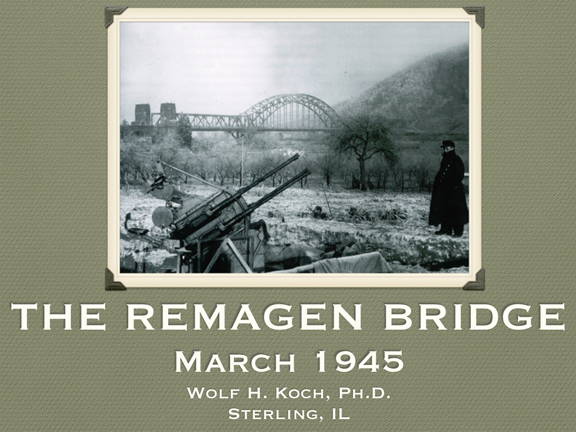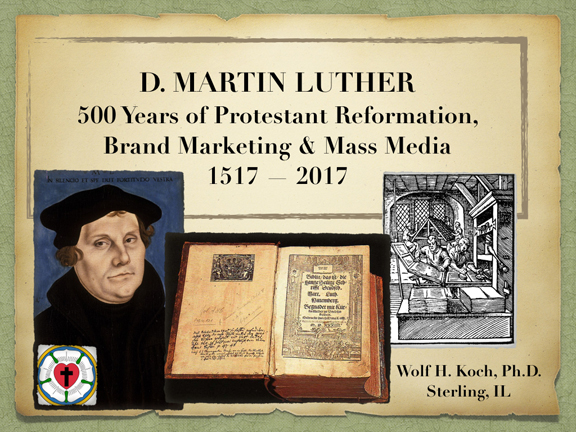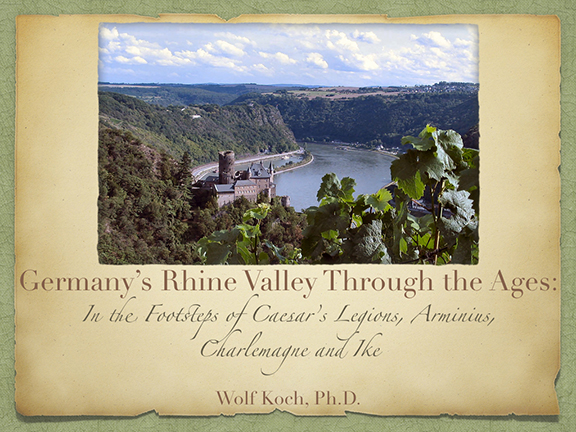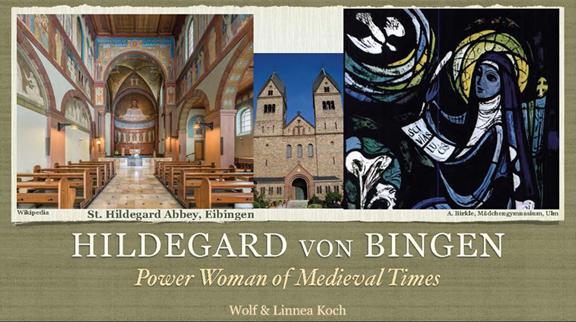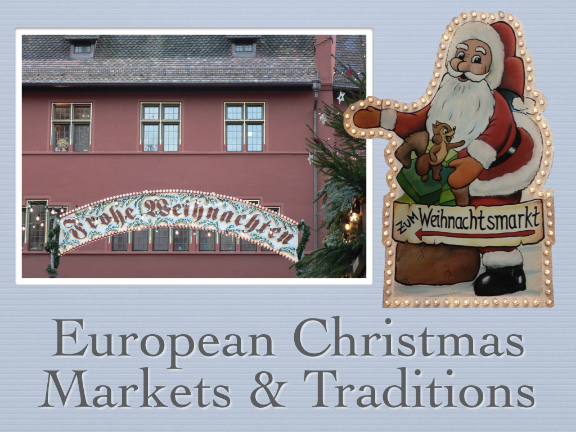
HISTORICAL PRESENTATIONS
Click on the title below description for full information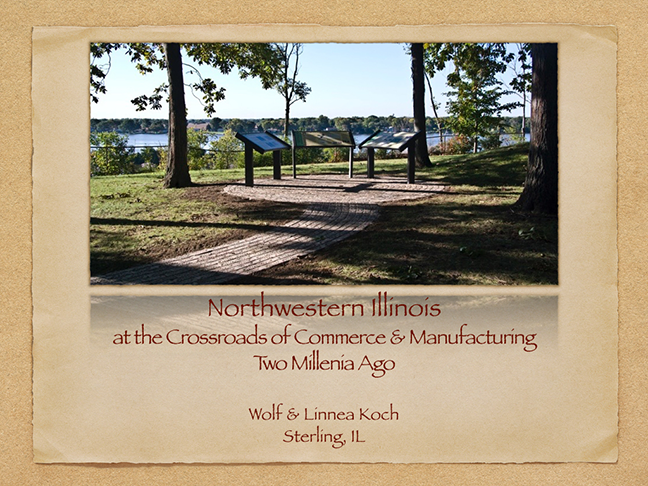
The story of the Hopewell Civilization in Sterling and northwest Illinois has been presented more than 20 times over the last 8 years. During 2017, the presentation has been given four times to regional historic and archaeology groups. It traces the development of a thriving ancient civilization in northwestern Illinois, reviews the significance of local area mound sites and the development of local pipe stone mining, utilization and trading, concluding that northwestern Illinois was at the center of manufacturing and distribution two millennia ago.
Northwestern Illinois at the Crossroads of Commerce & Manufacturing
While developing the three interpretive signs on the Hopewell civilization located in Sterling’s Sinnissippi Park, the Koch’s also wrote comprehensive history of the mound-building civilizations in Northwestern Illinois. A printed version of the booklet is available from the Sterling-Rock Falls Historical Society; a low-resolution electronic version may be downloaded via the link below.
Originally prepared for the Davenport, IA German American Heritage Center, this talk has also been given to local historical societies and civic groups for the 70th Anniversary of the end of World War II. The presentation is based on eye-witness accounts and interviews, histories of the 1st Army and the 9th Armored Division, as well as several books written by historians on both sides of the conflict. It includes original photos and film clips as well as interviews from US Army and German archives. It has been updated for the 75-year anniversary of the War's end in 2020; the update includes new archival footage as well video clips of the 70th commemoration.
Originally prepared for the Davenport, IA German American Heritage Center. The presentation has also been given to local historical societies and civic groups during the celebration of the 500th Anniversary Year of the Reformation. On October 31,1517, Martin Luther, an obscure Roman Catholic monk set the stage to become the most widely recognized and read author/teacher of his era within a few short years. The talk reviews the beginnings of higher education outside the religious establishment, discusses the impact of printing technology on the development of 15th century European culture and emphasizes the unique events and outside influences that enabled Martin Luther to succeed where previous reformers had failed.
D. Martin Luther 500 Years of Protestant Reformation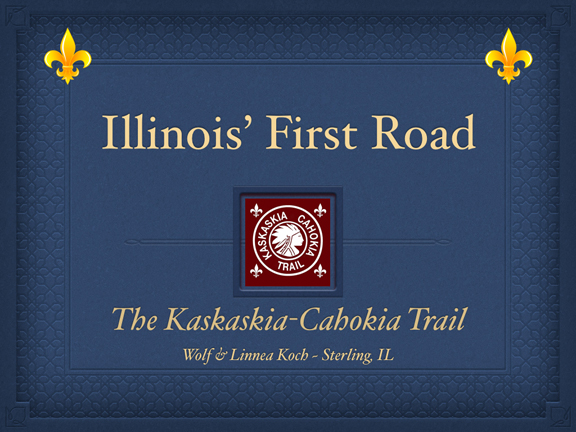
When we first mentioned creating this presentation on Illinois' First Road to friends, their response was either "Rt.30?" or "The Lincoln Highway?" No, lllinois' First Road runs near the eastern edge of the Middle Mississippi River. Along the way we find such historic treasures as the Kaskaskia Bell State Historic Site; Fort Kaskaskia; Fort de Chartres, built in 1719; La Belle Fontaine (Bellefountaine), site of the first American settlement in Illinois; Cahokia, a town as old as Colonial Williamsburg with a vertical log church first built in 1699; and many historic dwellings once home to notable French and American settlers, including the home of General Samuel Whiteside for whom Whiteside County is named. Wolf and Linnea Koch have made several trips to the Kaskaskia - Cahokia Trail region, photographed historic sites and collected interesting information covering 350 years of French and American colonial history.
Germany's Rhine valley has been at the center of civilization for more than 100,000 years. In 1856 human remains of what became to be known as the Neanderthals were discovered northeast of Cologne and later dated to be more than 100,000 years old. The Romans occupied the area and built today’s main streets through most towns along the river’s left bank. Charlemagne established the Holy Roman Empire in 800, maintaining many residences along the Rhine, including one of the most prominent in Ingelheim, near Mainz. The region produced many great men, among them Gutenberg, the inventor of movable type who was designated as the Man of the Millennium in 2000 and Martin Luther who met the imperial diet in Worms in 1521, a meeting which changed western religious life forever. Napoleon traversed through the area, changing its geo-political makeup. One of the last important events of World War 2 took place in the region when the last in-tact bridge, the Remagen Bridge was captured by the Allies, shortening the war by many months. Following the war, West Germany established its government in Bonn, home to Beethoven, just south of the much larger Cologne, which had been the provincial Roman capital almost two millennia earlier.
Germany's Rhine Valley Through the Ages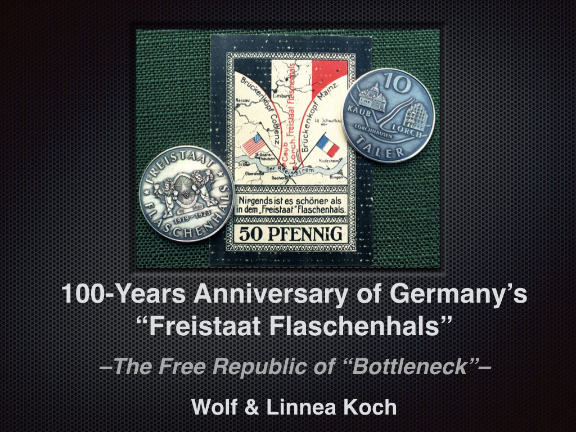
This is the story of an insignificant bureaucratic mistake resulting in the declaration of a new republic in the middle Rhine valley. World War I ended on November 11, 1918 with the Armistice of Compiègne which required the withdrawal of all German forces to the east bank of the Rhine, Allied occupation of the Rhineland, and Allied bridgeheads surrounding Cologne (Köln), Koblenz and Mainz extending east of the river. These Allied bridgeheads were mandated to have a 30-kilometer radius, with British forces controlling Cologne, American forces Koblenz and French forces Mainz. Allied experts had failed to notice that the Koblenz-Mainz corridors did not overlap, resulting in a narrow strip of no-mans-land shaped like a bottleneck and stretching from south of Lorch to north of Kaub along the Rhine and extending east to Limburg into the rest of Germany. The region included 11 towns with about 17,000 people, which were now isolated on three sides by the river and the Allied bridgehead borders, with no roads or other infrastructure connecting them to the rest of Germany. The mayor of Lorch declared the area to be independent and proclaimed the “Freistaat Flaschenhals”, the Free Republic of Flaschenhals (Bottleneck), on January 10, 1919. During the next four years, the region became the center for black market activities. Information on this rather bizarre, but interesting part of the history of the Rhine Valley has been preserved in local archives in the form of photos, documents and currency printed by the Freistaat Flaschenhals.
100-Year Anniversary of Germany’s “Freistaat Flaschenhals”
–The Free Republic of “Bottleneck”–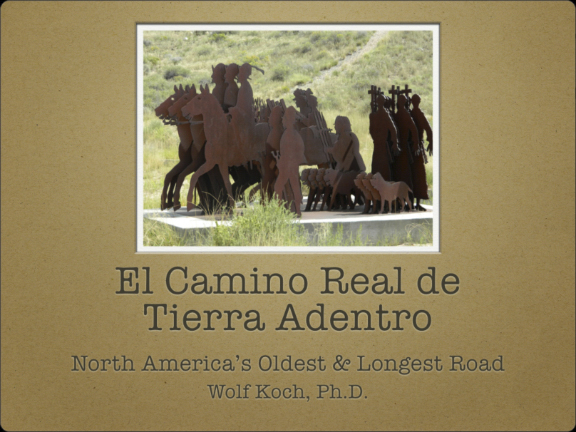
El Camino Real de Tierra Adentro (Royal Road of the Interior Land) was born thousands of years ago when Native Americans followed routes used by buffalo and other animals, realizing that these creatures knew the best paths to take. The trail is North America's oldest and longest road, connecting pueblos north of Santa Fe with Mexico City. In October 2000, the 404-mile stretch of the trail between San Elizario, Texas, and the San Juan Pueblo north of Santa Fe, New Mexico, was designated as a United States National Historic Trail.
For much of its U.S. range, the trail follows a natural highway formed by the Rio Grande; it deviates from the river’s course where narrow gorges prevent trails and roads along its banks. In close proximity to its path, we find 19 current Pueblos and countless archeological sites.
El Camino Real de Tierra Adentro 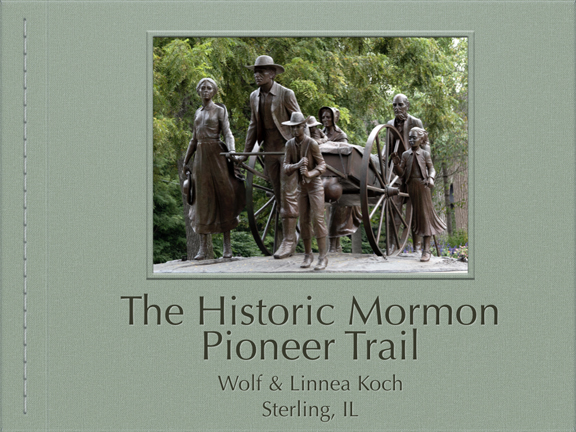
While history books teach about Mormon persecution and the trek westward to Salt Lake City, they are generally silent about the very significant contributions LDS members made during their trek: they built passes across the Rocky Mountains and constructed bridges and operated ferries across the rivers of the American West. During the trip home to Salt Lake City, members of the Mormon Battalion developed much of the early infrastructure in California, building roads, forts, sawmills, bridges, etc., and enabling thousands of settlers to travel through the Sierra Nevada during the Gold Rush.
During 2020, we commemorate the 100th anniversary of the ratification of the 19th Amendment to our Constitution which guaranties women the right to vote. In celebration of this anniversary, the German American Heritage Center in Davenport, IA, features a special exhibit on German and German-American women who left their mark on the world. Among the stories of these amazing women is that of the original “Power Woman,” Hildegard von Bingen, confidante of popes and emperors as well as other prominent contemporary thinkers of the 12th Century, more than 900 years ago.
First records of Christmas Markets date to 1296 for Vienna and 1310 for Munich; the markets became regular holiday season events in most cities during the early 1900s. We will visit the large Christmas Markets of Cologne, Nürnberg, Freiburg and Basel (Switzerland) and travel to the small Black Forest towns of Sankt Blasien and Waldshut and present long-standing Christmas traditions. The program ends with a visit to the German Christmas Markets in Chicago and suburban Naperville.
European Christmas Markets & Traditions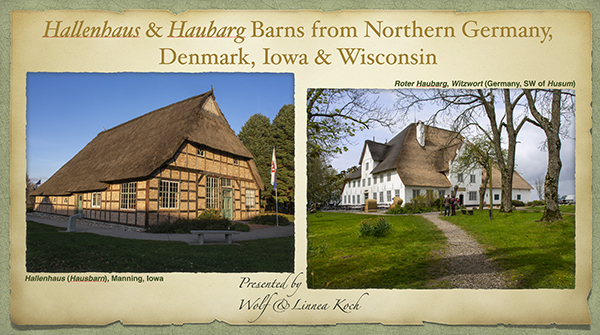
This presentation provides a short overview of farmstead and barn construction in various parts of Germany and concentrate on the specific Hausbarns found in northern Germany and Denmark, the Hallenhaus and Haubarg farmsteads. While two German Hallenhaus barns reconstructed in Manning and DeWitt, Iowa, there are no Haubarg type barns in this country -- in fact, there are only about 100 of these very large magnificent barns left in Germany and Denmark. The presentation will explore these traditional European farmsteads and compare them to those built later by German and Scandinavian immigrants here in the Midwest, available for visits at the Old World Wisconsin open air museum in Eagle, Wisconsin.
